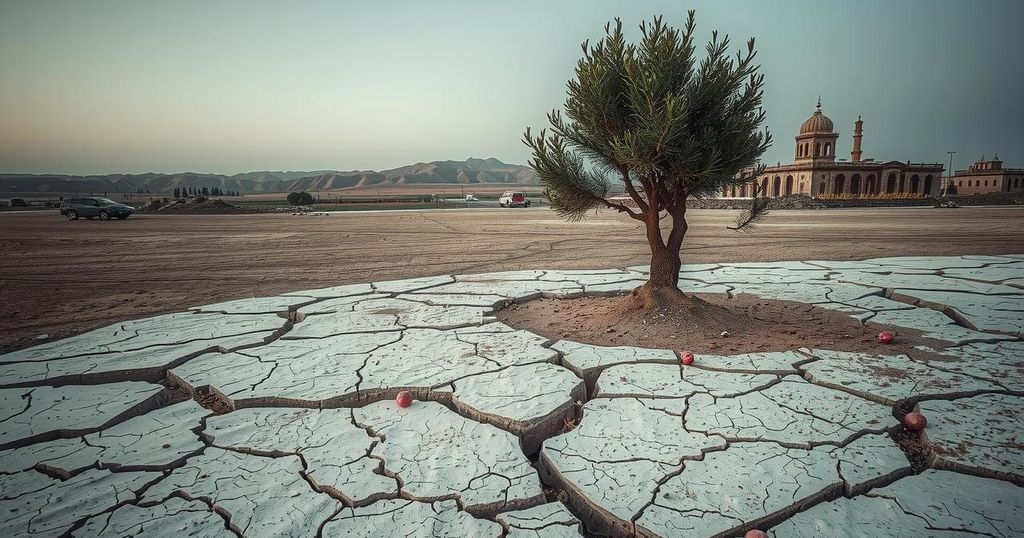Bashar al-Assad’s regime collapsed after nearly 14 years of brutal civil strife, originating from 2011 protests against his rule. The conflict drew in numerous factions and foreign powers, resulting in widespread devastation and humanitarian crises. By 2024, opposition forces captured major cities, culminating in Assad’s removal from power and signaling a significant shift in Syria’s political landscape.
The fall of Bashar al-Assad’s regime in Syria culminated in over a decade of civil strife marked by immense bloodshed and national fragmentation. Initially sparked by widespread protests against Assad’s governance in 2011, the uprising transformed into an armed conflict, escalating as various factions, including foreign powers, became involved.
In 2011, significant protests erupted against Assad’s rule, prompting severe military reprisals that resulted in arrests and shootings. As opposition grew, some protesters armed themselves, leading to military defections and widespread support from foreign nations.
By 2012, the conflict intensified with the emergence of the Nusra Front, an al-Qaida affiliate, which began to undermine nationalist groups. Diplomatic efforts for a peaceful resolution repeatedly faltered due to differing international interests, and Assad intensified air assaults on opposition strongholds, escalating violence.
The involvement of Hezbollah in 2013 was pivotal, as it aided Assad’s forces in strategic victories. However, a chemical weapons attack in Eastern Ghouta garnered international condemnation but yielded no military response from the United States.
The rise of the Islamic State in 2014 and their declaration of an Islamic caliphate in Raqqa further complicated the conflict, leading to U.S.-led military actions that targeted IS while causing friction with Turkey.
In 2015, significant shifts occurred as Russia intervened militarily on behalf of Assad. This involvement turned the tide of war in Assad’s favor, despite an increase in Islamist militant participation, and the Syrian army made important territorial gains.
Tensions escalated in 2016 as Turkey launched its own military operations against Kurdish forces, establishing a secure zone while Assad’s forces seized Aleppo in a crucial victory. By 2017, U.S.-backed forces made significant advances against IS, reclaiming territory from the extremist group.
In 2018 and 2019, Assad regained control over significant regions, including Eastern Ghouta and southern Deraa. The U.S. decided to maintain a military presence to support Kurdish allies after IS’s territorial defeat.
By 2020, a ceasefire agreement with Turkey entailed a precarious stalemate with Assad maintaining control over most major cities. However, regional events, particularly the escalation of the Israel-Hezbollah conflict in 2023, weakened Assad’s position.
The final collapse of Assad’s regime occurred in December 2024 when opposition forces capitalized on disarray among Assad’s allies. The capture of major cities, culminating in the fall of Damascus, signifies a dramatic shift and the end of a 14-year conflict that resulted in profound humanitarian disaster.
The Syrian civil war began in 2011 when protests against the Assad regime erupted, ignited by the Arab Spring movements across the region. The unrest quickly escalated from peaceful demonstrations into armed conflict as despair turned into violence against the government. The involvement of various factions, including radical Islamist groups and foreign powers like Russia and the U.S., further complicated the situation and prolonged the conflict. As the war continued, it led to one of the worst humanitarian crises in modern history, causing mass displacement and significant loss of life.
The fall of Bashar al-Assad after years of sustained conflict marks a pivotal moment in Syria’s history. The uprising that began in 2011 transformed the country and drew in significant international involvement, ultimately leading to a humanitarian catastrophe. The capture of major cities by opposition forces in 2024 symbolizes the end of an era dominated by violence and strife, raising hopes for a new chapter in Syrian governance and rebuilding.
Original Source: projects.voanews.com






